Harbin Opera House: Building at Extremes
- Youtube Views 73,871 VIDEO VIEWS
THE CITY of Harbin, in the north eastern corner of China, is an extreme environment. The average January temperature is -18 degrees Celsius, though it often falls to -24. Such hostility, makes the creation of Harbin Opera House even more remarkable.
Harbin has grown and developed at such a rate that it is now making a concerted effort to ensure its culture keeps pace. The eighth most populous city in China now has Harbin Cultural Island; a major new arts complex positioned amongst the Songhua River wetlands and home to the breath-taking new Opera House.
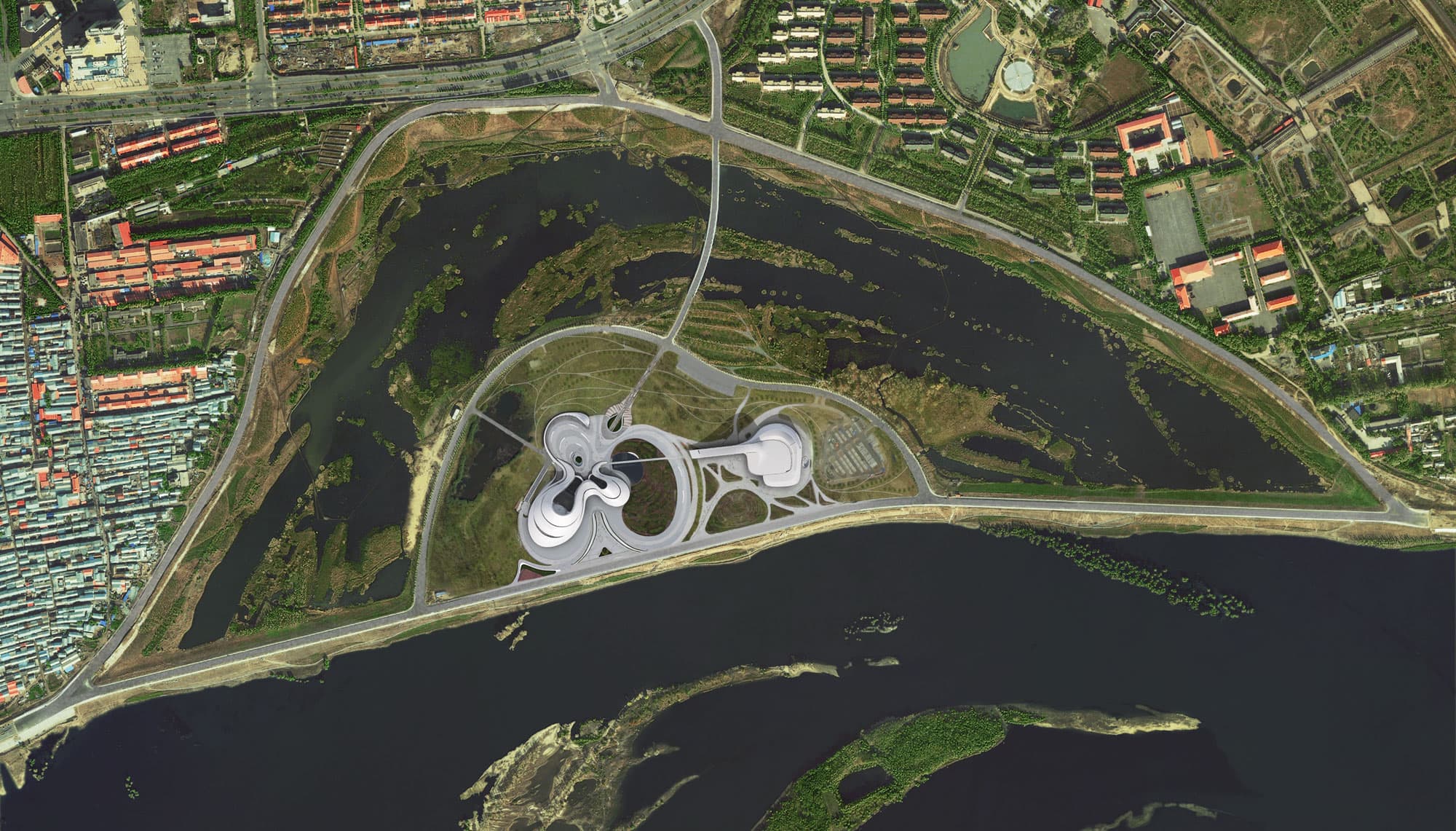
Above: Harbin Opera House is situated amongst wetlands neighbouring the Songhua River. Below: The building's extreme floor plan (image and plan courtesy of MAD Architects).

Designed by Beijing-based architects MAD (a rather fitting acronym), the building’s extreme undulating form creates 79,000 square meters of internal space and offers two unique performance venues: the Grand Theatre capable of seating 1,600 people and a smaller space for more intimate performances with just 400 people in attendance.
Conceptually, the building is designed to mirror the curves of its neighbouring marshlands and the ice forms that besiege it for significant portions of the year. Taking a design like this from concept stage to a viable reality in such a harsh climate required extreme thought and attention to detail.
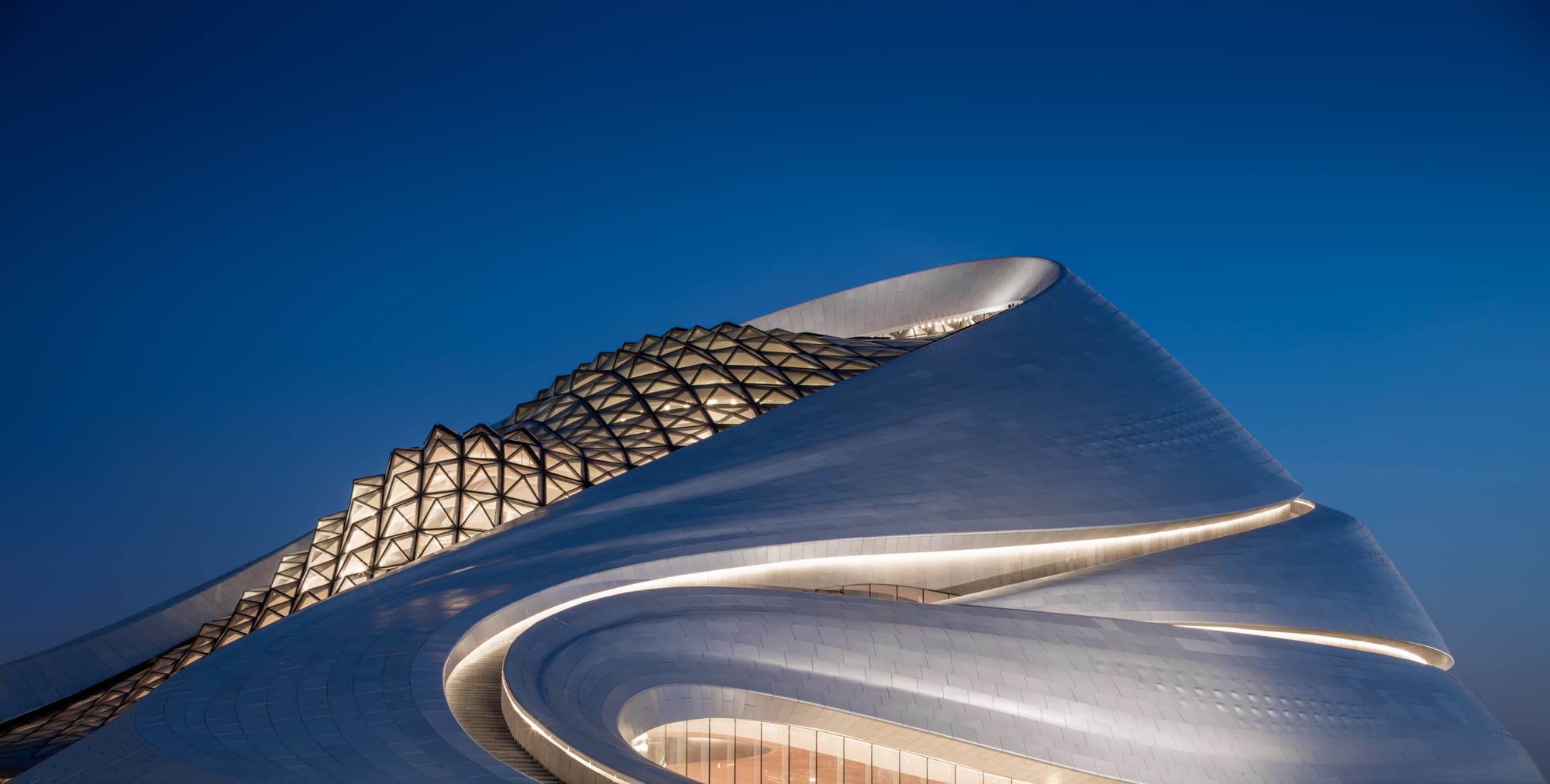
Above: The large north facing skylight (image courtesy of Adam Mørk), and Below: Part of the building's breathtaking interior (image courtesy of Hufton + Crow).
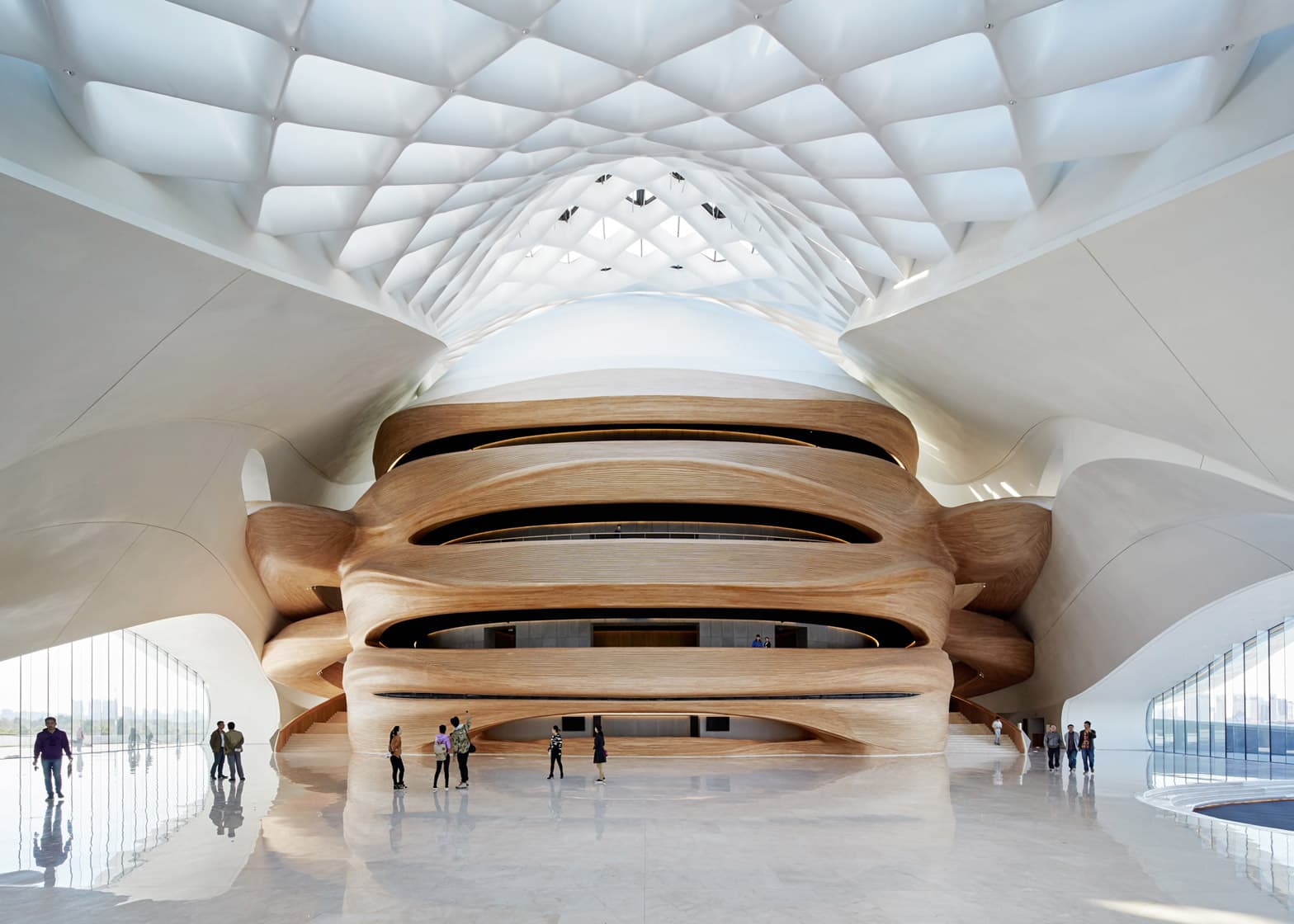
To reduce the time out on site in the bleak weather, much of the building’s components were prefabricated and then brought to Harbin for assembly.
Steel was deemed the most resilient material for the core structure.
The roof of the Opera House is engineered to hold the weight of record snowfalls if necessary, and strategically installed electrical heating around downpipes and the entrances to drainage systems help to avoid these becoming frozen.
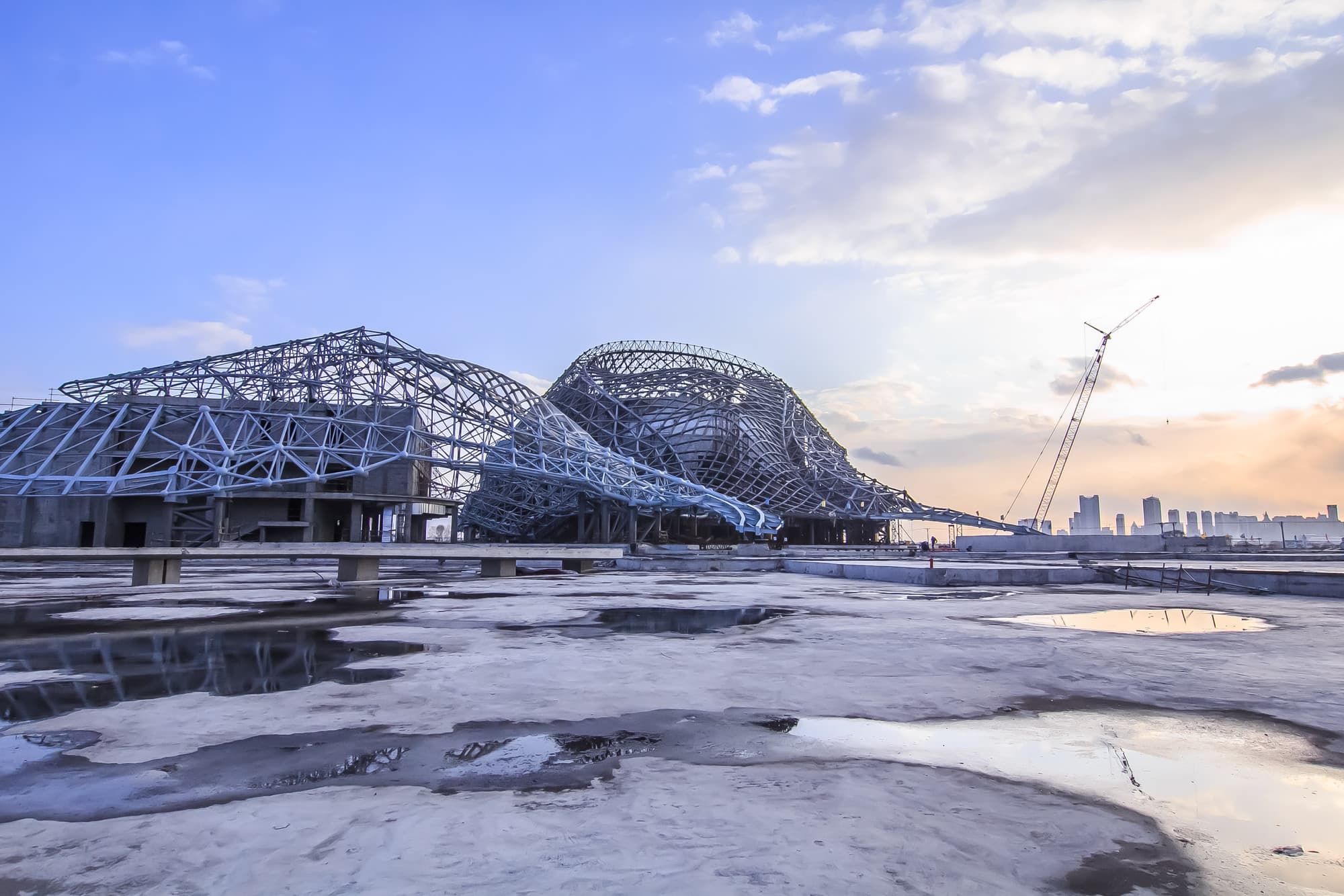
Above: The Opera House under construction (image courtesy of MAD Architects).
Sealants within the aluminium cladding and the curtain walling are specifically engineered to expand and contract with the variants in temperature. The curtain walling itself is tested in extreme wind speeds and with the great volumes of water that can flow off the building during melts.
"Temperatures often fall to -24oC. Such hostility makes the creation of this building even more remarkable"
The large north facing skylight contains four layers of glazing to significantly reduce heat loss and improve energy performance.
RELATED: TOP 5 COOLEST SKYSCRAPERS
Contrasting with the white aluminium externally, the Grand Theatre is lined with timber to ensure the best possible acoustic experience, whilst creating a feeling of warmth.
The Opera House has fast-become synonymous with the city of Harbin; a truly extreme design that has put this extreme location on the map.
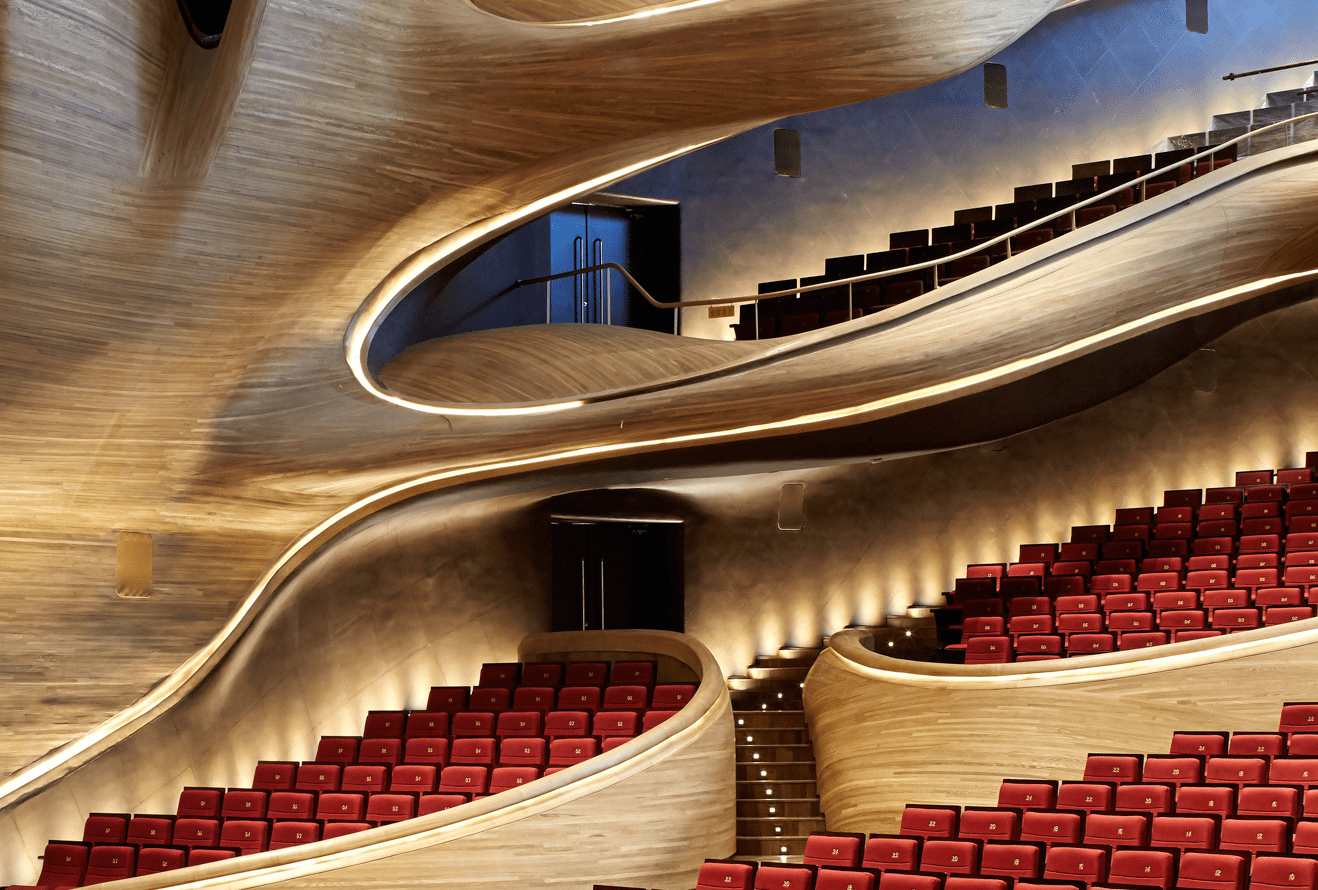
Above: The interior of the Grand Theatre (image courtesy of Hufton + Crow), and Below: The Opera House in its setting on Harbin Cultural Island (image courtesy of Iwan Baan).
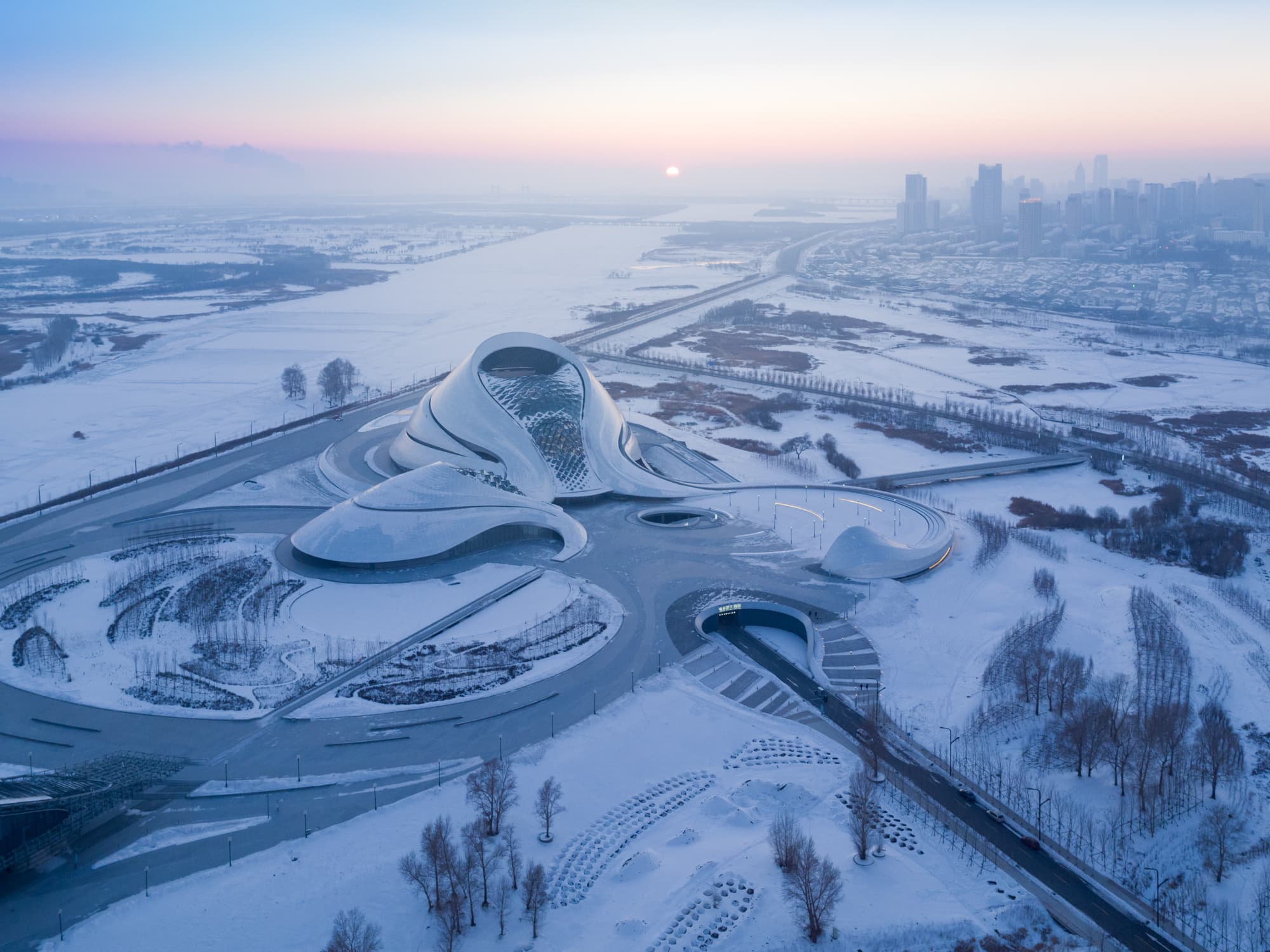
Images courtesy of MAD Architects, Hufton + Crow, Iwan Baan, Adam Mørk and Fred Dufour/AFP. Video thumbnail image courtesy of Iwan Baan.
We welcome you sharing our content to inspire others, but please be nice and play by our rules.




